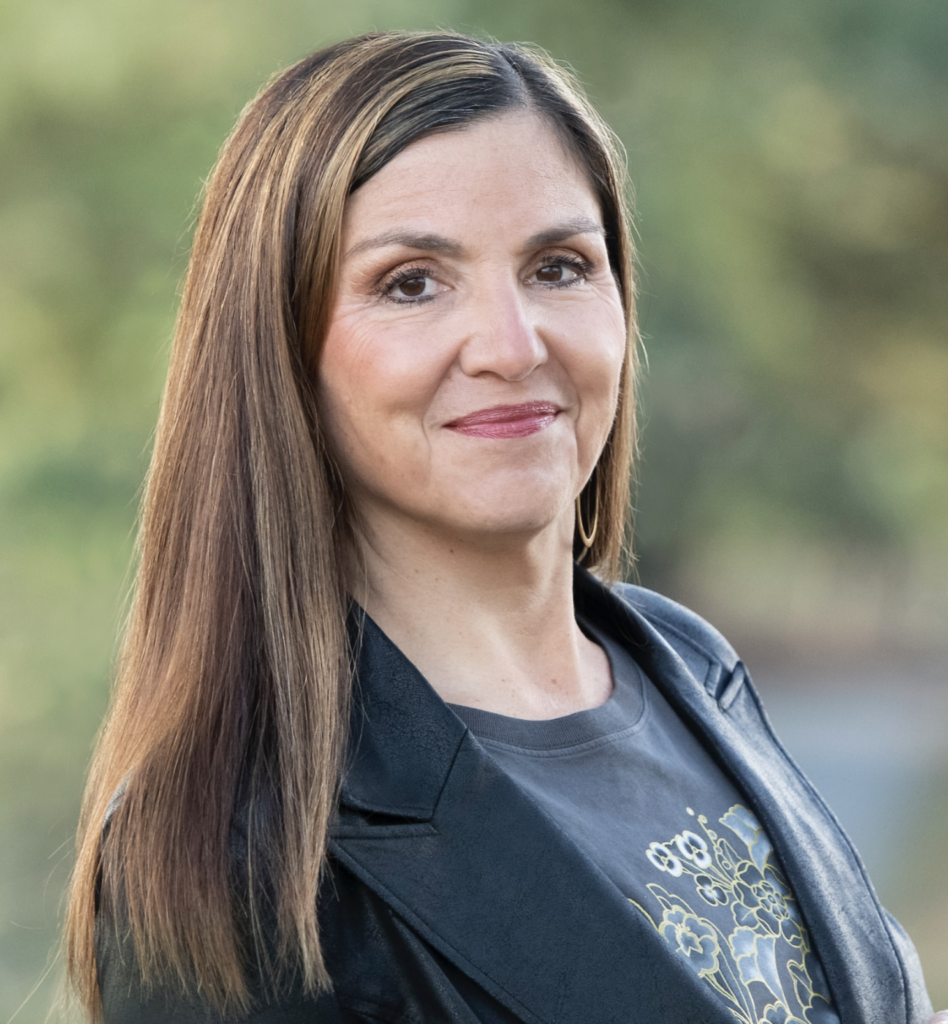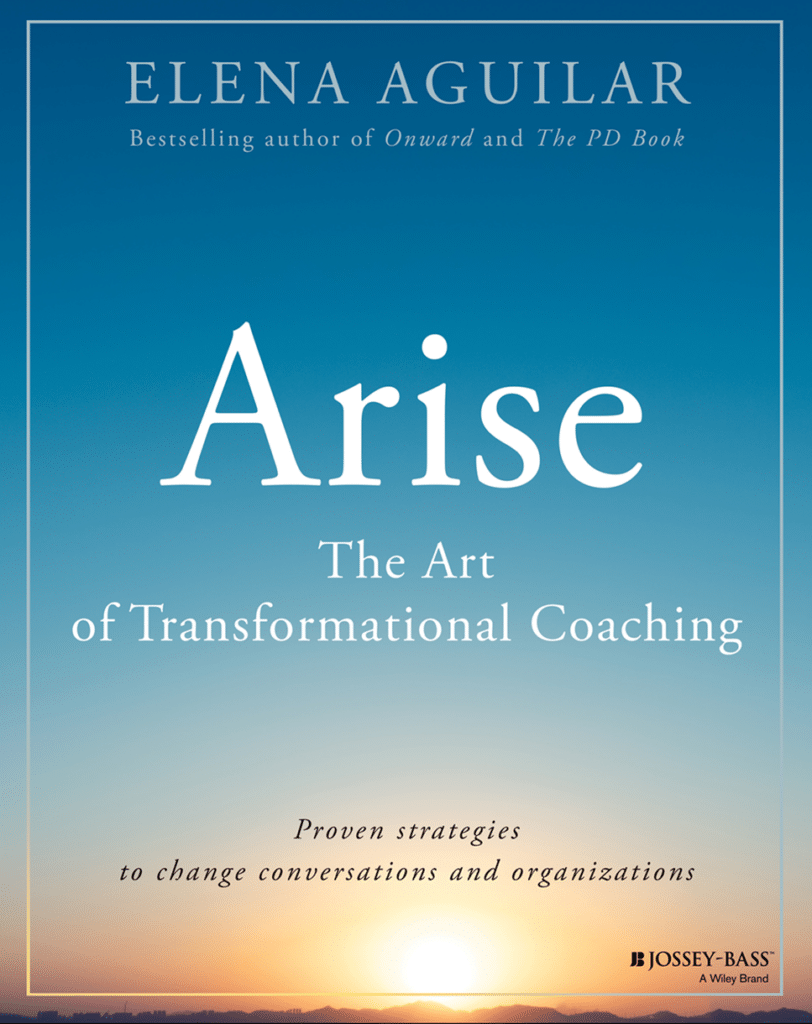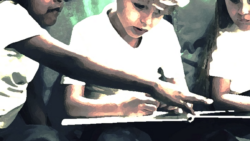
Listen to the interview with Elena Aguilar (transcript):
Sponsored by EVERFI and Listenwise
This page contains Amazon Affiliate and Bookshop.org links. When you make a purchase through these links, Cult of Pedagogy gets a small percentage of the sale at no extra cost to you. What’s the difference between Amazon and Bookshop.org?
Teaching is intense, vulnerable work. Every single day, teachers are put in situations where their confidence is tested, where they make mistakes, where the people they serve — or their peers, or their mentors — can say and do things that wound them to their core. Every teacher shows up with their own histories and insecurities and flaws. It can be lonely. It can be overwhelming. On some days, it feels impossible. We can look at student data and try new instructional strategies all day long, but until we learn to navigate all of these complex feelings, the work of improving our teaching will always be limited at best. And anyone who wants to help teachers get better needs to know that.
One person who definitely knows that is Elena Aguilar, who has been coaching teachers for two decades and has written eight highly acclaimed books all centered on helping teachers grow. Her newest book, Arise: The Art of Transformational Coaching (Amazon | Bookshop.org), was written to replace 2013’s The Art of Coaching, which is being taken out of circulation now that the new book is published.

While the new book contains some elements of the original, this one takes a much more humanistic approach. “There were certain things that I didn’t go into as deeply as I wanted,” Aguilar explains. “In some ways it was just a different time … a time when we were compelled to focus more on the technical elements. Since then, I feel like the changes in the world, the changes in the education system, the crises in the world demand that we speak more holistically, that we really address every dimension of being an educator, including the emotional, the physical, perhaps even the spiritual.”
This is a big shift from traditional coaching, she says, “which is about data cycles and analyzing student work, learning targets and all of that. Teachers don’t need more of that. What they need is for someone to let them sit down, take a long deep breath, and actually talk about truly what’s on their mind and on their heart and have some space to sort through that.”
The strategies in Arise are all built on a framework of six core human needs: belonging, autonomy, competence, self-esteem, trust, and purpose. The approaches she teaches in the book are all meant to create the conditions where teachers can get these needs met. In our conversation, we looked at these needs one at a time and talked about what it looks like when those needs are not being met, how teachers can address those needs for themselves, and how those who support them can do the same.
While the book is written for instructional coaches working with teachers, Aguilar says “Anybody can use coaching strategies. A teacher can use them with their students. Principals can use them with their teachers. When you’re thinking about wanting to help someone develop, you need to keep their full humanity at the center.” So my hope is that these insights will be helpful not only to instructional coaches, but to everyone.
The Six Core Human Needs
“Think about something in your life right now that doesn’t feel good,” Aguilar begins, “perhaps in professional life. When you think about this situation, it brings up some tension or conflict or sadness or frustration, something uncomfortable. It could be something like in the middle of the summer you found out that your job assignment was shifted. As I describe these core human needs, you can think about the degree to which that need is being met or is feeling unmet. By engaging this reflection, it’ll help listeners get a deeper sense of the core human needs and what it looks like for them. There’s some commonalities between all humans and then there’s some unique expressions of when these are met or unmet.”
1. The Need for Belonging
Just like students, teachers have a need to be connected to others. Aguilar puts this one at the very top of the list. She points to research on organizational development that shows that when employees feel connected to each other, they are more likely to stay in a job. “They learn more, and they take risks, and student experience and outcome improves. One of the things that happens to us when we are connected to others and we can blow off steam or sit at lunch and talk about what’s going on is we can share our experiences, we hear others share theirs. Our feelings become normalized. Our perspective expands. We don’t feel like, oh, there’s something wrong with me. We often extend compassion to each other. We extend compassion to ourselves. And sometimes we laugh, and all of those are other key factors that allow people to thrive.”
Because the work of a teacher is siloed by nature, the relief and bonding that comes from sharing experiences with a peer group may not be readily available to them. That sense of belonging has to come from more intentional action, like social time set aside by school leaders. Type A teachers who may see social events as wasted time may need to be reminded that the bonding and community-building that comes from this time is important and will lead to a more cohesive, productive staff.
The belonging can also be created by the teachers themselves. Aguilar often coaches teachers who demonstrate a need for more belonging to create more opportunities for connection in their schools, districts, or even outside their own immediate communities.
Finally, instructional coaches can also build this sense of connection by simply listening, allowing teachers to share their experiences and helping them feel seen.
2. The Need for Autonomy
Many teachers are working within systems where they don’t have much control over decisions; the more this is true, the more likely they are to be feeling an unmet need for autonomy. How does Aguilar suggest teachers deal with this problem?
First, she recommends starting with our own thoughts and feelings, an area we all have more control over than we think. But beyond that, she encourages teachers to take a closer look at those other things — decisions they feel are out of their hands — and reconsider whether they might actually be able to have some influence in those areas.
“A lot of people think, I can’t influence that.” she says. “Well, you might if you decided you wanted to put your energy there. I find overwhelmingly that people have so much more power than they think they do; they just don’t have the skills to act on it. And they’re afraid. So often I hear teachers say things like, Well, that just happened, and what am I going to do now? I say, Well, could you go to your principal and just get more information, so you have more of an understanding of why she made that decision? Could you share some additional insights or perspectives? Would you be open to hearing her insights and perspectives? Could you think about proposing this? Could you propose that? There’s so many ways for us to productively act on our desire to have more influence or more autonomy, and I really do think that this is a skill set that, again, we’ve been conditioned to not act on. We’re trained to be submissive, responsive, passive, and so we need to relearn the skills of taking action on what we want to have more influence on.”
3. The Need for Competence
“One of the ways that I hear the need for competence expressed by teachers is I’ll hear them say things like, If we focused on classroom management, if the school was calmer, then I could do my job. But right now I’m not able to do my job. The school’s out of control. And that’s a desire, that is, I came into this to teach biology or third grade or whatever it is, and right now it feels like there are obstacles in the way. And I can’t fulfill the purpose that I came here with.”
When it comes to addressing these needs, Aguilar notes that often simply naming and acknowledging the need goes a long way. “Sometimes all we need to do is slow down, hit pause, have some space to acknowledge. We don’t actually necessarily have to meet those needs. We just have to say something like, I’m really hearing your commitment to teaching and to your students, and I can really hear your frustration that we’re not addressing these other issues. And I want to just appreciate that. Just validating someone’s desires, their needs, because so much of the struggle, the tension, the conflict in schools comes from people essentially feeling like, Nobody listens to me. Nobody will just listen to me.”
4. The Need for Self-Esteem
When Aguilar hears teachers say things like, “No one appreciates me. My principal doesn’t appreciate me. My students don’t. Their parents don’t. Nobody appreciates how hard I work,” she hears an unmet need for genuine self-esteem. “(It’s) self-esteem that comes from within. It’s not a result of comparison. It’s not a result of any kind of achievement or accolade. It’s something really deep inside.”
To start addressing this need, “I will help someone begin to identify their strengths, to identify when they’re acting on those strengths, and to create more opportunities to demonstrate their assets as a teacher. If I do a classroom observation, this is the kind of teacher who I’ll walk in the room after the classroom observation, and they’ll say, Okay, what did you think? I really want to know what you thought. Was that awful? Am I a terrible teacher? And I’ll say something like, I’m going to share some of my observations, but first I want to hear from you. I want to give you space to identify what went well. Because the impact of them identifying is exponentially more meaningful than me.”
5. The Need for Trust
Aguilar explains that this one is actually a person’s need for trust in themselves, not in others. “I can trust myself to find the resources I need to deal with this situation,” she says.
“This is the teacher who says things like, I can’t handle this situation. I can’t take one more thing that lands on my plate today. This is my breaking point. I’m done. That’s a reflection of a lack of trust in one’s own ability. To explore how to meet these needs, we often have to first give a little breathing space to the emotions that are coming up. There’s a lot of fear … there’s so much fear in education, in educators, in humans. One of the most common questions I get about coaching is how do you deal with the resistant teacher? And resistance is an expression of distrust and fear and often grief. That teacher who’s been teaching for 25 years, and she is not seeing what she hoped she would see when she came in as a teacher. She’s actually just heartbroken.
“So as a coach,” she explains, “what I do is first I have to build a relationship with them. I have to remember that there is something good and whole and beautiful about them. I have to try to remember that they were not like this when they came in. So I have to build a relationship with them. I have to kind of be with them where they’re at, and what they fear most is that I’m going to try to change them. So I have to just be with them in their sadness and their grief. But what’s amazing is how quickly they want to change because they’re miserable.”
From there, a coach can start helping those teachers rebuild trust in themselves, a belief that they are capable of handling this incredibly challenging work.
6. The Need for Purpose
“Purpose and meaning are often connected to a desire for transcendence, the desire for something bigger. It’s beyond self-actualization. It’s perhaps more metaphysical or spiritual … I just want my life to mean something in the big picture.“
Aguilar addresses this need by helping teachers get better at recognizing what’s already working.
“Our minds have a negativity bias. This is a survival mechanism for humans; we remember danger. If you do a professional development session for 100 people, you get 100 surveys back, and 99 of them had positive feedback and one of them said something slightly critical, ten years later you remember that slightly critical thing. This is a really old evolutionary leftover that we need to correct.
“What we need to do is strengthen neural pathways that help us focus on what is working. So one of the things I’ll do is guide teachers into starting to catalog what is going well. Where do you see indicators that you are having impact? Maybe all 150 of your students did not score proficient on the exam. So let’s break this down a little bit. Let’s look at the data. We’re looking for bright spots. We’re looking for your strengths. We’re looking for student strengths. And that really is what we need to start doing systematically and intentionally to reprogram our brains.”
Emotions as Wise Friends
This new focus on emotions reflects a shift Aguilar sees us going through as a society, “a shift from seeing emotions as a problem to fix … hopefully we’re coming out of a mindset where humans are all seen as problems to control, regulate, manage so that we can be more productive. It’s just not working.”
Instead, she says, we’ll learn more if we treat emotions like “incredibly wise friends. I don’t like the language that’s used in a lot of SEL programs around managing emotions or regulating emotions, because that sounds to me like the language of control. I think we can develop good relationships with our emotions and that doesn’t mean that they get to drive the bus or take charge of things. Anytime I hear someone expressing an unmet core human need, I see an opportunity. Like, oh, so you want to more deeply express your purpose as a teacher, or you want to become more competent. That’s great. Let’s explore that.”
You can learn more about Elena’s offerings on her website Bright Morning. This fall, in cities across the U.S., she is hosting a series of two-day, in-person workshops called The Art of Transformational Coaching. She is offering Cult of Pedagogy listeners $200 off the registration fee — just use the code JenniferG200 at sign-up.
Join our mailing list and get weekly tips, tools, and inspiration that will make your teaching more effective and fun. You’ll get access to our members-only library of free downloads, including 20 Ways to Cut Your Grading Time in Half, the e-booklet that has helped thousands of teachers save time on grading. Over 50,000 teachers have already joined—come on in.






What a great article and interview, as a future teacher I am glad I got to read this article. I am currently in a teacher preparation program!
So glad the post resonated with you, Edgar. Best wishes on your teaching journey!